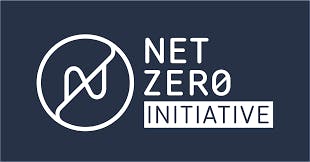What is the Net Zero Initiative ?
The Net Zero Initiative helps companies and organizations find a way to get the most out of their decarbonizing efforts, with the goal of achieving global carbon neutrality. In short, Net Zero means lowering greenhouse gas emissions to as close to zero as possible and accounting for the remaining emissions by way of carbon offsetting projects.

Global Net Zero refers to the state in which the total amount of greenhouse gases (GHGs) emitted by human activities worldwide is balanced by the amount removed from the atmosphere. While it is possible to strive towards contributing to reaching this global goal, no company or individual can ever claim to have reached net-zero. Yet, some companies claim they reached so-called ‘carbon neutrality’.
Carbon neutrality is a closely related concept, often used interchangeably with net zero, but the two terms are not one and the same.
The differences between the two terms are as follows:
- Carbon Neutrality is used to refer to projects, companies or products whose direct and indirect CO₂ emissions have been balanced with CO₂ removals or offsets.
- Net Zero refers to the global state where strategies are implemented worldwide to reduce all greenhouse gas emissions as close to zero as possible, and then using carbon capture and storage to eliminate the more hard to reduce emissions.
Companies can claim to be carbon neutral without really aligning their activities with global Net Zero - for instance, by neglecting to tackle other GHG than CO₂, or by heavily relying on offset instead of reducing their emissions. Carbon neutrality claims are thus increasingly scrutinized and critiqued.
What is the goal of the Net Zero Initiative?
The Net Zero Initiative is a project supported by Carbon4 and the French Ministry for the Ecological Transition, offering a framework or reference for companies to adhere to the principles of Net Zero. Becoming a signatory of the Net Zero Initiative means to reduce one’s emissions as close to zero as possible, and to compensate for remaining emissions through offsetting projects.
How you can strive towards contributing to global Net Zero:
- Measure and calculate all emissions such as from business operations and supply chain emissions.
- Reduce such as by cutting emissions wherever possible by utilizing renewable energy sources and implementing measures for improved energy efficiency.
- Offset or remove additional emissions that are more difficult to reduce, such as by compensating for excess emissions via credible projects such as forest conservation, wind or solar energy development, or carbon capture technologies.
Examples of companies and regions striving towards contributing to Net Zero include:
- A technology company located in a sunny location installing solar panels on-site to switch to the use of renewable energy, and aims to purchase carbon credits to balance hard to reduce emissions.
- A city seeking to upgrade their public transport to electric vehicles and invests in a carbon offset project like urban tree planting to absorb residual CO₂.
FAQ
Is net zero the same as zero emissions?
No, net zero and zero emissions are not the same thing – as zero emissions refers producing no emissions at all, which is virtually impossible for any company, besides regenerative agriculture, to accomplish.
Why can’t companies claim to be truly carbon neutral?
Companies can’t claim to be fully carbon neutral as they can only contribute to the global goal of carbon neutrality, and therefore – cannot achieve that goal on a global stance by themselves, even if they claim to have achieved it by themselves.
What makes a carbon offset credible?
A carbon offset will be credible when it is additional, permanent, verifiable, and measurable. In other words, an offset usually wouldn’t occur otherwise without voluntary involvement.
Are net zero claims regulated?
Yes, it is becoming more common for net-zero claims to be regulated – as more regions are introducing guidelines and disclosure rules to prevent misleading claims and greenwashing.
How does net zero relate to the Paris Agreement?
The Paris Agreement calls for global net zero in the second half of the century to limit warming to 1.5–2°C.





